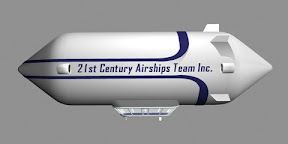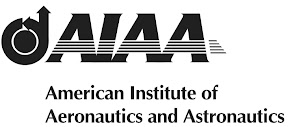 21st Century Airships a Canadian Airship Development Company, is currently working on a new airship. Up until now 21st Century Airships has been famous for their spherical Airships. They also successfully licenced their technology to the US company Cyber Defense Systems. To see pictures and even a video of their original airship you can also check out a post on the Blog crashworks.
21st Century Airships a Canadian Airship Development Company, is currently working on a new airship. Up until now 21st Century Airships has been famous for their spherical Airships. They also successfully licenced their technology to the US company Cyber Defense Systems. To see pictures and even a video of their original airship you can also check out a post on the Blog crashworks.Now 21st Century Airships is working on a new Airship for tourism and sightseeing activities. On their website you can see some great pictures of the gondola which will accommodate up to 19 passengers. Of course such a new development needs a prototype. So 21st Century Airships has build a small scale 2 person prototype of the Voyager Airship which has already complete it's first test flights. Here are the recent announcement released by 21st Century Airships:
September 24, 2007We quoted the two announcements here since we do not know how long they will stay up on the Website of 21st Century Airships. But make sure to check out the original website for more pictures of the prototype.We have just completed the test flights for the scale version of the Voyager Airship. The Voyager Airship is a 19-passenger craft, purpose designed for sightseeing rides. As expected, the airship was extremely maneuverable and is able to perform VTOL (Vertical Take-Off and Landings). Steering and altitude controls are activated with a joystick, making the pilot's workload very light.
August 1,2007
Our latest airship is now ready to take flight. This distinctive looking airship is a two-seater, scaled-down version of our 19-passenger, sightseeing airship. It will act as a test platform for the many systems, with new and advanced standards, that we are incorporating into our airships.
Although this elongated-shaped airship has stabilizing fins, there are no moving surfaces such as rudders and elevators. Steering and altitude controls are affected by directed thrust from the engines, a system developed and patented by 21st Century Airships Inc. The main advantage of this new system is that it allows the airship to be highly manoeuverable at any speed from 0 to full. This airship has no elevator wheel or rudder pedals. Instead it is simply controlled with a joy-stick.
Test flights are scheduled to begin mid August 2007 near Newmarket, Ontario, Canada. After the initial test flights are completed, the airship will be used for demonstrations, as well as for collecting data for the ongoing Type Certification of our 19-passenger, sightseeing airship.
The Winnipeg Free Press article we talked about yesterday also mentions that 21st Century Airships is planning on flying the prototype to Winnipeg this coming fall. You can be sure we will be reporting about it when it happens.


